Charles Platt at 22, in August of 1967, on a balcony outside a house in Notting Hill (archives of Charles Platt)
![]()
Born in 1945, Charles Platt was at the right place (his home town London) and certainly at the right time (the mid-Sixties) to be a part of the ebullient graphic and editorial scene that became a staple of that city’s cultural (and countercultural) life in those years. He did so by crossing paths with Michael Moorcock, then the new (and also very young) editor of the almost defunct British SF magazine New Worlds, a chance encounter that happened just as Moorcock was finally able to revamp and restyle the magazine into an exciting forum that mixed edgy SF (the crème de la crème of the British “New Wave” of speculative fiction), essays on contemporary art (some of the best essays on the British Pop Art scene would be published there) and cutting edge scientific research, all presented in a graphic package that, although following a rigid layout grid (thus appearing in a suitable “conservative” form for its readers), allowed free experimentation and testing of the limits of what a SF magazine was expected to be (as J.G. Ballard would later admit, New Worlds actually ceased to be a SF magazine altogether). Although never assuming the “weight” of those titles, Platt was the de facto art director and main graphic designer of New Worlds from 1967 to 1971, when this adventurous phase in the life of the magazine ended (he would later return to layout a handful of issues in the late 1970s, the very last ones). He’s had a versatile career since then, as an author and communications and technology expert (writing for Wired magazine in the 1990s and, more recently, for the website BoingBoing), but it was Michael Moorcock, in the interview he gave me last year, that shed some light on the importance of Platt’s graphic work at New Worlds in that period. So here is Platt himself giving his account of that work. (Pedro Marques)
Spread for Kazoo by James Salis (NW #174, August 1967, with collage by Vivienne Young)
![]()
1. When did you come across NEW WORLDS (NW) and when did you begin your collaboration with it? What attracted you to it?
I bought copies of the magazine from British news stands occasionally in the early 1960s, from the age of 15 or so. At that time it was edited by John Carnell, and I was not impressed by it, because it seemed like a weak imitation of American science fiction magazines. However, New Worlds, Science Fantasy, and Science Fiction Adventures were the only British magazines at that time (all from the same editor and publisher), so I started submitting short stories to Carnell, all unsuccessfully. When I moved to London I discovered that Michael Moorcock had taken over as editor, with bold plans to create a synthesis between science fiction and modern literature. His plans were very exciting to me, and he happened to live a few blocks from me in London. He started publishing my stories, and I started making small suggestions regarding typefaces in the book-sized format that the magazine had at that time. From there it was a natural progression for me to design the large-size version of the magazine. I was 21 or 22, had no formal design training, but it never occurred to me that I couldn’t do it.
2. Did you have any artistic or technical background in graphic communications prior to your work at NW? Being London then (mid to late 1960s) a fervent and creative scene in the editorial market, attracting talent from Europe and America, what were your main influences in publishing design (book and cover design) or specifically editorial and magazine design?
I was studying at the London College of Printing, for a degree in printing management, which I found utterly uninteresting. But it did teach me the basics of offset lithography; the practical limitations involved. I had always enjoyed drawing cartoons, and was a halfway good artist, but never thought of myself as a designer. My influences back then were the posters for rock bands that you could see all over London, and later the San Francisco “hippie lettering” on rock posters. I did become actively interested in typography, after I started designing the magazine, and tried without success to become really good at hand-lettered fonts. Mostly I went to the Letraset catalogue, always looking for new fonts. All the display type (with the exception of a bit of hand lettering) was done in Letraset, the British dry-transfer system that was an imitation of the American Presstype. You scribbled over some lettering on a plastic sheet, and the letter transferred itself into art board. Maintaining alignment and letter spacing was extremely difficult.
“I did all the typesetting on an IBM Composer, a glorified typewriter”: Charles Platt work desk, circa 1969 (archives of Charles Platt)
![]()
At that time Letraset also sold various tinted, translucent sheets which could emulate the effects of overprinting one color with another. Since we could only afford two colors for the cover, I became interested in the possibilities. Traditionally we had used black plus one color, but with two colors such as red and green, the overprinted area was such a dark brown, it was almost black, and this way, we could have the illusion of three colors. We couldn’t afford proofs, so I just prepared two separate pieces of art, with hand-drawn register marks, specified a Pantone color for each, sent them to the printer, and hoped for the best.
The counterculture magazine Oz was appearing around this time, and used a lot of really extreme color overprinting effects, like Wired magazine in the 1990s. Red text overprinting solid blue backgrounds; that kind of thing. I found this amusing, but not relevant. We wanted our readers to be able to read the text without undue strain. And we couldn’t afford color for the interior pages anyway.
3. In 1967, NW reshaped itself radically into a “glossy”, avant-garde magazine, and this transformation was parallel to your becoming its principal designer or art director. In what way did you work with Michael Moorcock (NW’s editor) in giving it this new radical look? How much of an input were you allowed to give initially?
Mike had a private inner vision of what he wanted. He was not very good at communicating this (or, I was not very good at understanding it), so for the first of the large-size issues, I showed him a succession of sample covers. He kept saying, “That’s ALMOST what I have in mind”. Eventually I said I didn’t think I could do any better, so we settled for the final rough that I showed him. From that point on, I received no supervision at all. Absolutely none. This was one of Mike’s great strengths: he had the courage to let people express themselves. When I was writing for Wired in the early 1990s, they had the same kind of courage and faith in their writers. Excessive editorial interference is usually a sign of insecurity.
4. What were the magazines you had in mind when designing NW? Or was it “terra incognita” from the start?
Other than the influences I have mentioned above, I can’t recall anything that I looked at for inspiration. No other magazines were publishing a similar kind of content, so they seemed irrelevant.
Spread for The Inconstant Alpha by Christopher Evans (NW #176, October 1967)
![]()
5. Eduardo Paolozzi seems to have been a pivotal figure in this reshaping of NW as well, being a close friend of both Ballard and Moorcock and a founding member of the Independent Group (and a seminal Pop artist). How did you work with him? And were you influenced by his work in any way?
I never met Paolozzi, but he did allow me to recut one of his collages to create one of our covers. Amazing, really. I just chopped it up with a utility knife.
Spreads for Language Mechanisms by Christopher Finch (NW #174, August 1967)
![]()
6. In the interview he gave me last year, Moorcock told me your work at NW had a big impact in such paperback imprints such as Panther (who published your Garbage World). In my view, Panther had some very striking, beautiful covers in their SF series in the late 1960s. Did you do any design for Panther or other SF paperback publishers?
I was not a designer! It never occurred to me to seek work professionally. I just designed New Worlds because no one else in our circle had any idea how to do it. I have often thought that Mike could have advertised for design students, who would have worked as cheaply as I did, but I think he preferred to deal with people who understood what the magazine was about. We did do one issue which was guest-designed by a college instructor who got his students to do some of the art, but in many ways we didn’t like the result. It was more professional, but it looked too much like a “normal” magazine. We wanted something which was more like a “nouveau book”. It had to have a booklike, literary quality, because the text was so important. That was why there was a slight formality about it. Only two types of pages, really: two-column, for fiction, and three-column, for features. That formality was helpful, I think. Of course it would have been difficult to do anything else. The printer did all the typesetting for us (small typesetting machines were unknown until very near the end of the magazine’s lifetime in its large-format incarnation) so we just received these long paper galleys, which we snipped into sections and glued onto layout sheets. I say “we” because after a while I was assisted by Nigel Francis, an old school friend.
Once in a while Mike [Moorcock] mentions that the old issues of New Worlds have attracted some praise for design. For many years, I simply didn’t believe him. I was so embarrassed by my own limitations and, well, amateurishness. But now I think I see that there is a naive quality to them which is interesting.
7. How did you see the overall look of SF publishing in the UK and America back then? There seems to have been a short period of very good imagery, shown on the covers of Panther, Penguin, Doubleday (even the London Science Fiction Book Club, with Terry James’ covers), and then, after 1971, a sudden collapse. Do you agree with this or have a different view on it?
I’m sorry but I don’t really remember those British book covers. I always liked the garish, trashy look of American science fiction covers.
8. What were NW’s connections with the busy London underground (or alternative) press scene? Moorcock told me you collaborated with Barney Bubbles on Frendz, and, of course, he and Mal Dean had published the Jerry Cornelius comic strip in It Internacional Times. How and where did NW placed itself in that complex arena?
I didn’t deal with the Frendz people at all. I didn’t have time. I had to earn at least 50% of my living wage outside of New Worlds, because Mike could not afford to pay me enough to live on. I was commissioning art and photographs (which often didn’t turn up in the form I expected, and required additional work). I was putting together a 64-page magazine with no help at all, initially, and we were always short of visual material. I was doing Letraset headings, and of course the cover. It was a full-time occupation. We had a very clear division of labor: Mike and his fellow writers dealt with anything to do with content. I did the visuals. Often I didn’t even have time to read the magazine!
Spreads for The Summer Cannibals by J.G. Ballard (NW #186, January 1969)
![]()
9. Much has been written, especially since his death, on the visual side of J.G. Ballard’s career. His collages for Ambit and New Worlds and his passionate defense of Surrealism stand as evidences of his visual flair and culture. How was it to work with him on NW?
I loved Ballard’s work, and Ballard was delighted with some of the visuals I provided for his stories. He would telephone me in a state of excitement, which was very pleasing, because I admired him so much. I shared his obsession with surrealist painting. But I didn’t work with him; I just did whatever I wanted, and he got to see the result when it was printed. The only person who saw it before it was printed was Mike. I used to show him the layout pages before they went to the printer.
The issue of NW that Ballard liked best was #186, because I illustrated his story The Summer Cannibals in a way that he thought was very appropriate. A lot of small pictures, emulating the way his story was in small sections. He said he wished we could publish all his stories like that. So did I! But it was an incredible amount of work, finding material that was appropriate. No internet back then. No stock photos. Just clipping pictures out of car catalogues and magazines. Easy to see why he liked this presentation. In his view of the world (and probably mine too), the media landscape creates an equivalence between the curve of a thigh and the contour of automobile sheet metal, and a car crash becomes a perverse erotic event. I understood his vision very well, and I had a unique advantage in that my father was a director of a British automobile manufacturer. This made it easy for me to obtain photographs of automobile crash testing, AND American car catalogues. Perfect! Throw in some sinuous shapes of freeway interchanges, a nude model, and closeups of an eyelid and a pair of lips (all stolen from published sources without shame) and there you had it.
The issue I was most pleased with was #216, when I went back to England in 1979 and did one for old time’s sake, financing it by selling off a lot of old back issues that we had accumulated. I did all the typesetting on an IBM Composer, a glorified typewriter.
But, there was a problem. Back in the 1969/70 I had done the typesetting myself, of the last few issues, but for NW #216, when I told our printer that I wanted to do this, he said he wouldn’t be able to print it, because I was not a member of a union. “If I print nonunion typesetting, my paper suppliers will cut me off,” he said. Amazing! I couldn’t afford to pay for union typesetting, but very fortunately there was a friendly “socialist collective” typesetter in the neighborhood, run by a bunch of amiable lesbians. They said I could do the typesetting, and so long as they approved of it, they would pretend they had done it, and would put their name on it.
Okay, great–but the trouble began when I showed them the finished pages. I wanted to include a facsimile page from Norman Spinrad’s book A World Between, which I thought was a very embarrassing novel. The page described a militant feminist giving in to her irrepressible desire to supply oral sex to a man. I thought there was no need to write a negative review of the book; the page spoke for itself. But the lesbian typesetters were horrified. I argued that I was mocking the excerpt from Spinrad’s novel. They said no one would know that unless I made it clearer. I refused to compromise. In the end I said, “Fine, I will just leave that page blank.” Indeed, page 41 is blank.
NW #216 actually received some news-stand distribution, as I recall. R. G. Meadley, who used to illustrate the magazine, saw the issue on sale and actually bought a copy. He said my style was so distinctive, he knew immediately that I had designed the cover, even though we hadn’t seen each other for 9 years.
“Moorcock had conceived the idea of ‘news reports from imaginary futures’. I took this a step further and mixed genuine news in with the fiction”: cover and spreads from NW #216 (1979)
![]()
I also guest-edited and guest-designed an issue of Interzone, in 1995. By then the whole thing could be done on a Mac. I chose to use Adobe Illustrator to create every page–text and graphics–because Illustrator allowed such freedom with text. I could use trapezoidal text areas, for instance, which were not possible with Quark or PageMaker (Indesign did not yet exist). Also I could draw my own display type in Illustrator and then distort the letters right there on the page with all the other elements. That issue of Interzone was what I would have liked to do with New Worlds if I had had the resources.
Once in a while Mike mentions that the old issues of New Worlds have attracted some praise for design. For many years, I simply didn’t believe him. I was so embarrassed by my own limitations and, well, amateurishness. But now I think I see that there is a naive quality to them which is interesting. Properly trained people can never do naive art, and therefore find it fascinating. Maybe magazine design is the same!
10. You seemed to use collages a lot, even in essays like “Fun Palace – Not a Freekout” in NW #180, March 1968. Would you say the collage technique (out of necessity or otherwise) could define visually the magazine more than, say, classic illustration or photography? In a recent essay Rob Latham proposed that being William Burroughs such a strong influence on Moorcock and Ballard, this “cut-up”, sort of random collage of visual debris aesthetic was a major characteristic of NW. Would you agree to that? Was there such a thing as a “visual” New Wave aesthetic?
I think it was a matter of expediency. We could make collages from found materials, instead of trying to find good original work. Also collages were sort of fashionable at that time. I don’t think we were aware of the surrealist collages, at that time.
Maybe there is a shred of truth in this, but mainly it was desperation. We were so clueless in those days. We had no idea how to find illustrators. When I did my Interzone guest issue, I went to the local art school, put a notice on their bulletin board, and received a lot of submissions. For some reason we never thought of doing anything like that for New Worlds. We just waited for people to show up. Gabi Nasemann showed up with a big portfolio of pre-existing pictures, and we bought them all and then applied them to stories whenever they seemed remotely suitable. I don’t think we ever commissioned her to do any work. Why not? I have no idea. Roy Cornwall likewise turned up and showed us his portfolio. We used some pictures from it. I later asked him to take specific photographs, but that never worked out very well; he didn’t have the surreal/strange/unexpected quality that we liked. Mal Dean somehow impressed Mike, and Mike gave him numerous commissions, which Mal did mainly for money (2 pounds 10 shillings per picture!). Mal’s work got sloppier as time went by. So, our illustrations were very hit-and-miss.
11. There was a change in the masthead from 1967 to 1968, with a bolder Helvetica in just one line of text. Was the masthead also your work?
Mike wrote it, I designed it. I don’t remember the details.
12. NW had some very striking covers: yours for issue 193, Stephen Dwoskin’s two covers, Gabi Nasemann’s, Andrew Lanyon’s, etc. How did you choose the covers, and, generally, how did you work with all these people (including Vivienne Young, Pam Zoline, Mal Dean, etc, all of them quite young, I imagine)?
Gabi’s pictures were all pre-existing. We would leaf through the stack that she contributed, and say–how about this one? Vivienne Young would draw whatever we asked, but the results were unpredictable and, I thought, disappointing. She was very flirtatious, and all of us wanted to get sexually or romantically involved with her, which may have played a part in her continued appearances in the magazine. Pam Zoline drew whatever she wanted to draw, and we loved her work so much, we were just happy to have it. Looking back, I could have been much more organized, resourceful, and diligent about finding art. But there was never enough time for that kind of thing.
Platt’s (with Christopher Finch) “scandalous” cover for NW #178 (December 1967).
![]()
13. Could you pick 5 covers out of the SF book cover portfolio of the past 50 years that definitely would make it into your personal canon of perfect SF covers? And, finally, what do you think defines a good SF cover?
For me, science fiction was defined by Kelly Freas covers on Astounding Science Fiction in the late 1950s. October 1958 for instance. But most of all February 1959, the pirate with a slide rule clenched between his teeth. I think Freas was a genius in his way. I liked his Mad magazine covers, too. How does this relate to New Worlds? Because those Astounding covers created a feeling of mystery, curiosity, surprise, and a need to know more. They also had an air of authority. The magazine was so sure of itself, and its vision, it had no problem using covers that were–well, incomprehensible! They were almost a gesture of defiance toward the reader, as if to say, “what do you make of THIS”? The October 1958 issue showed a midwestern guy in a checked shirt selling a can of snake oil to a black-skinned alien humanoid sitting on a levitating electromechanical saddle. The incongruity delighted me. I also liked the humor. I tried for the same kind of effect in the cover I did for NW #188, where a demented hippie is looking downward with revulsion–at the contents list of the magazine. That was a pre-existing Nasemann photo, which we didn’t know what to do with till I decided to put it on the cover. We had no problem making fun of ourselves, even though we were also very serious. We were too arrogant to entertain doubts about our judgment.














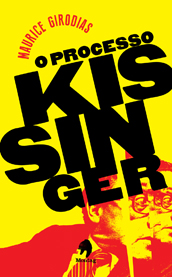
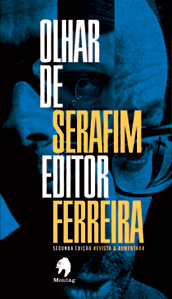
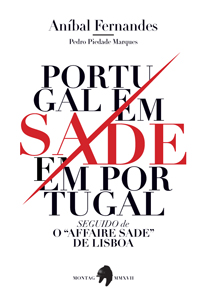
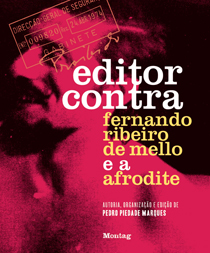
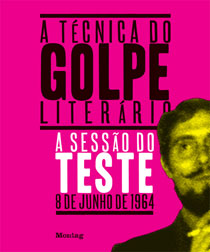

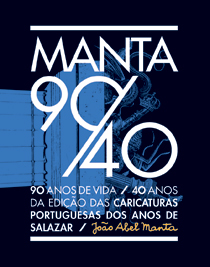
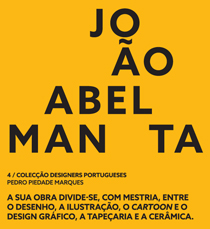
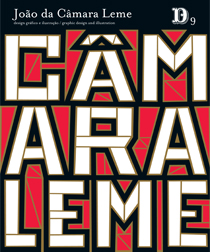
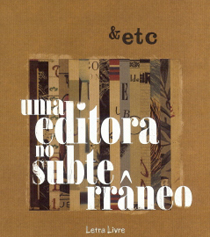
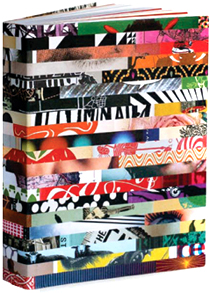
Great memoir of Charles Platt discussing the early days of British New Wave publications. I wish I knew of someone who has the old ones I can buy for my collection.
Thank you for dropping by, James!
By the way, it’s not impossible to still find old issues of NW (from this ’67-’71 period) at ebay. Scan it regularly and you’ll find them (as I have).
So that’s what New Worlds was like in the late ’60s. Wow. Sure fits with those times, doesn’t it?
Pingback: Esta semana « Rascunhos
Pingback: Make: Talk 007 — Charles Platt, Electronics Fun & Fundamentals | TUMBLR TRANSLATOR
Pingback: Make: Talk 007 — Charles Platt, Electronics Fun & Fundamentals – - AboutLifeX - Living News AggregatorAboutLifeX – Living News Aggregator
Pingback: Make: Talk 007 — Charles Platt, Electronics Fun & Fundamentals » Meslema
Pingback: MAKE | Make: Talk 007 — Charles Platt, Electronics Fun & Fundamentals
Pingback: Make: Talk 007 — Charles Platt, Electronics Fun & Fundamentals | House of Mods
Pingback: Make: Talk 007 — Charles Platt, Electronics Fun & Fundamentals | Top News Story
Pingback: High Technology » Blog Archive » Make: Talk 007 — Charles Platt, Electronics Fun & Fundamentals
Pingback: Make: Talk 007 — Charles Platt, Electronics Fun & Fundamentals
Pingback: Make: Talk 007 ? Charles Platt, Electronics Fun & Fundamentals | Knitting 4 Cash
Just saw this. Nothing to disagree with really. Gabe actually did do some commissioned work. Mal Dean was not ‘sloppy’ out of laziness. Poor bugger had cancer, which he died of. My sense of what I was doing was a little different. I had come out of magazine journalism and had a pretty clear idea of what I wanted to do. My principle has always been to pick the person and then trust them, whether it’s illustrating, designing or writing features. I was lucky in knowing Charles’ fanzines. Many of us began by doing our own fanzines. That’s how I got started in professional publishing. The term fanzine was originally only used in SF fan circles where a very large number were produced mainly in the Anglophone world.
Thank you for your comment, Mike!
Pingback: CABINET / Banham avec Ballard
Pingback: Banham avec Ballard | Mark Dorrian - NSO News
Pingback: Single Fictions, Multiple Authors – Daniel Sean Kelly